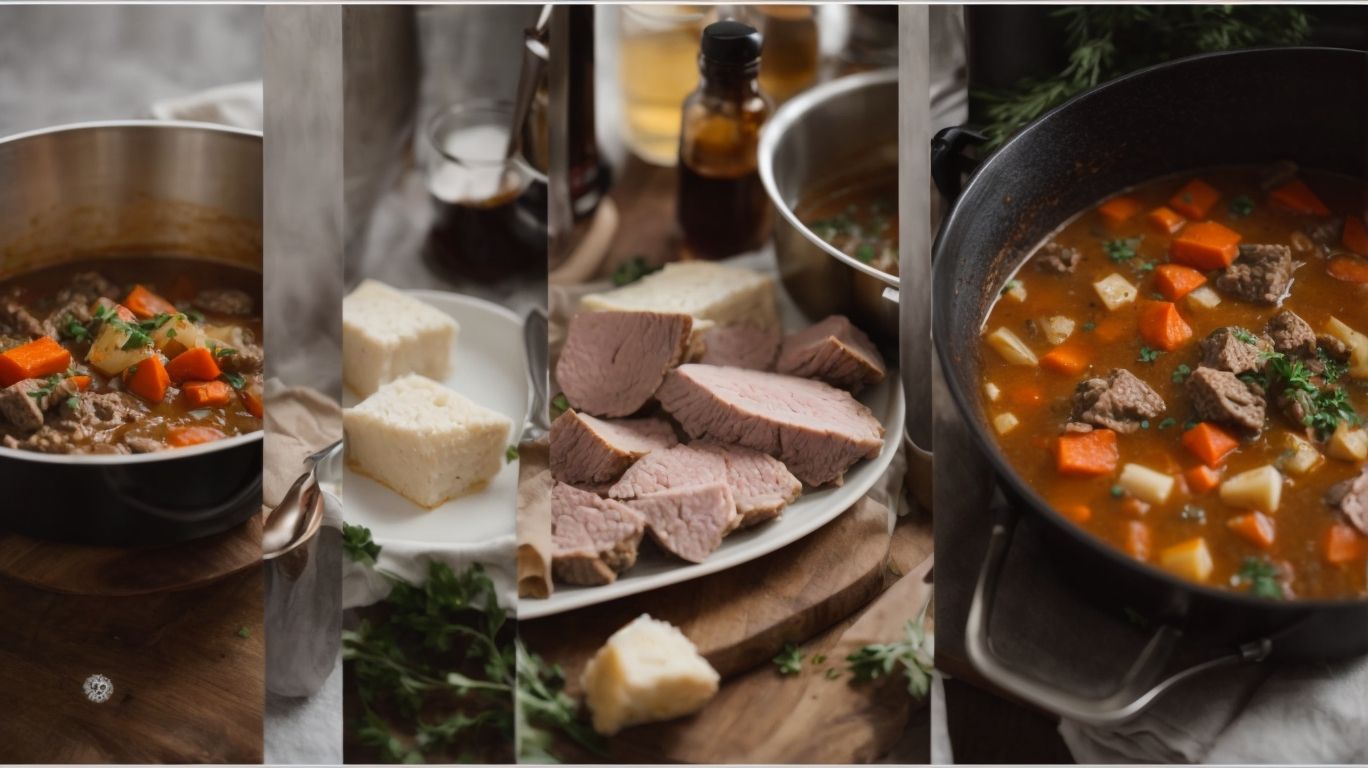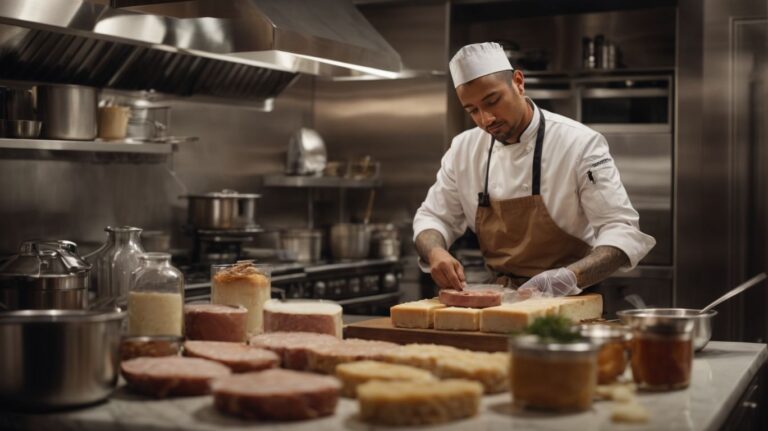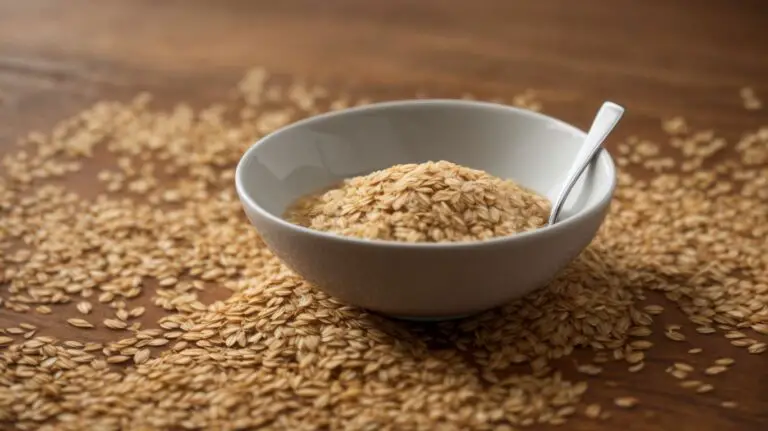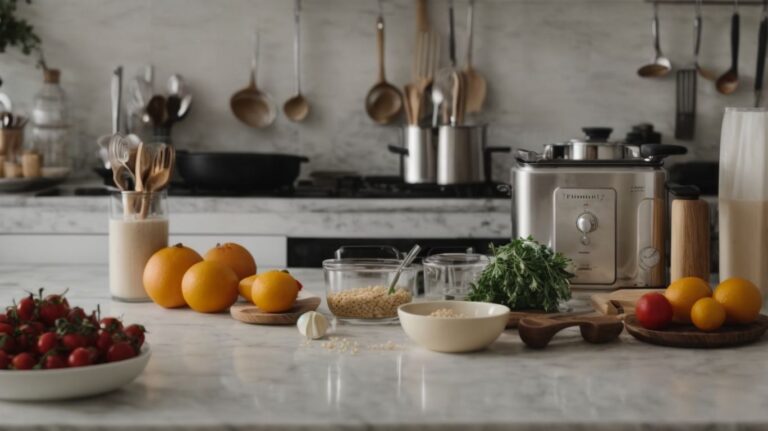How to Cook Lamb for Stew?
Looking to elevate your stew game with a delicious and savory lamb stew?
In this article, we will explore the best cuts of lamb for stew, how to prepare the lamb, essential ingredients, cooking tips, serving suggestions, and storing leftovers.
Whether you’re a seasoned chef or just starting out in the kitchen, these tips and tricks will help you create a mouthwatering lamb stew that will impress your family and friends. Let’s get cooking!
Key Takeaways:
What is the Best Cut of Lamb for Stew?
When preparing a delicious lamb stew, choosing the best cut of lamb is crucial for achieving a tender and flavorful dish.
Among the popular choices for lamb stew are Lamb Shoulder, Lamb Neck, and Lamb Shank.
- Lamb Shoulder is a versatile cut with a good balance of meat and fat, perfect for slow cooking. It adds rich flavor and becomes wonderfully tender when braised.
- On the other hand, Lamb Neck offers intense flavor due to the marrow and connective tissue present. When cooked low and slow, it yields a gelatinous texture that enriches the stew.
- Another excellent option is Lamb Shank, known for its robust flavor and melt-in-your-mouth texture when cooked for a long time.
Lamb Shoulder
Lamb Shoulder is a popular choice for stew due to its rich marbling and tender texture when slow-cooked to perfection.
The distinctive flavor profile of Lamb Shoulder adds depth and complexity to the stew, infusing the dish with a savory richness that intensifies with each passing hour of simmering. When cooked low and slow, the meat becomes incredibly succulent, effortlessly falling off the bone to create a melt-in-your-mouth experience. The versatility of Lamb Shoulder allows it to absorb a myriad of spices and herbs, enhancing the overall taste of the stew. Whether braised, roasted, or simmered, this cut of meat guarantees a hearty and satisfying meal that is sure to please even the most discerning palate.
Lamb Neck
Lamb Neck is a flavorful and budget-friendly option for stew, offering succulent meat that enhances the overall taste of the dish.
Regarding stew, the choice of meat can significantly impact the final outcome. Lamb Neck stands out due to its intense flavor profile, which adds depth and richness to the stew. The tender meat of the Lamb Neck easily absorbs the flavors of herbs, spices, and other ingredients, resulting in a melt-in-your-mouth texture that is hard to resist. Additionally, Lamb Neck is known for its affordability, making it a cost-effective option for those looking to create a hearty and satisfying meal without breaking the bank.
Lamb Shank
Lamb Shank adds depth of flavor and richness to stew, with its meat becoming tender and falling off the bone during the cooking process.
Due to its high collagen content, the lamb shank breaks down slowly when cooked low and slow, resulting in a velvety texture that lends itself perfectly to hearty stews. The marrow inside the bone adds a layer of richness that infuses the surrounding liquid with a luxurious taste, perfect for creating a thick gravy. The gentle simmering process allows the flavors from the shank to meld beautifully with other ingredients, creating a harmonious blend that is both comforting and delicious.
How to Prepare the Lamb for Stew?
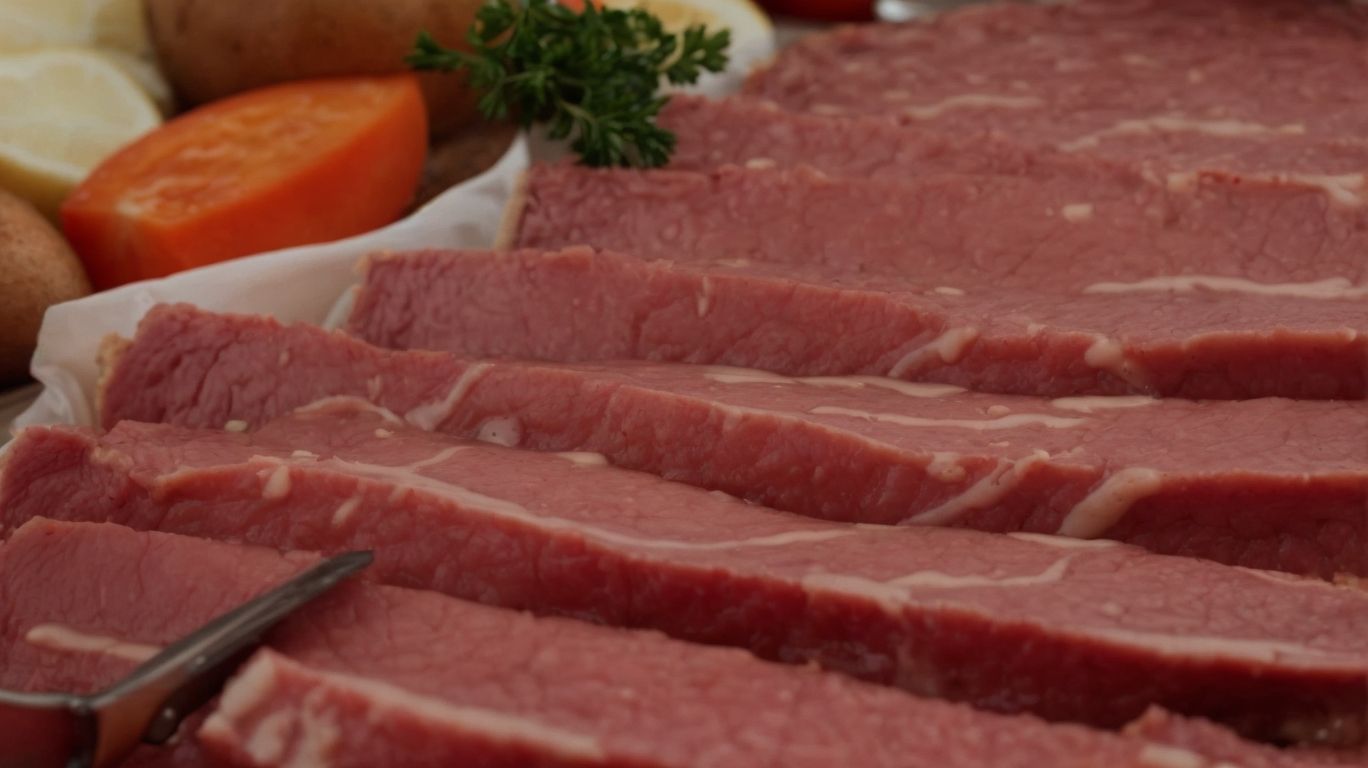
Credits: Poormet.Com – Anthony Hall
Before diving into the stew-making process, proper preparation of the lamb is essential to ensure a delectable outcome.
Start by examining the lamb and removing any excess fat that may not cook down during the simmering process, which could lead to greasiness in the final dish. Once trimmed, focus on cutting the meat into uniformly sized cubes to promote even cooking and a consistent texture throughout the stew. Taking time to perform these steps not only enhances the visual appeal of the dish by presenting evenly cooked pieces but also optimizes the lamb’s tenderness and flavor as it simmers in the fragrant stew broth.
Trimming the Fat
Trimming excess fat from the lamb helps enhance the dish’s flavor and prevents an overly greasy stew.
When preparing lamb stew, the process of trimming fat plays a crucial role in achieving a balanced and rich taste. Excess fat can overpower the delicate flavors of the meat and other ingredients, resulting in a heavy and unpleasant meal. By carefully removing the visible fat, you allow the natural flavors of the lamb and seasonings to shine through, creating a harmonious blend of taste sensations.
Excessive fat can affect the texture of the stew, making it greasy and unappetizing. Removing the fat ensures a velvety smooth consistency that coats each piece of meat and vegetable, offering a delightful mouthfeel that enhances the overall dining experience.
Cutting the Meat into Cubes
Cutting the lamb meat into uniform cubes ensures even cooking and consistent tenderness throughout the stew.
When the lamb cubes are of equal size, they all cook at the same rate, preventing some pieces from becoming overcooked while others are underdone. This practice not only harmonizes the overall taste profile but also enhances the visual appeal of the dish.
Uniformity in size aids in achieving an ideal texture, as each cube will have the right amount of bite without being too tough or too soft. Evenly sized cubes facilitate the absorption of flavors and spices, allowing the robust taste to permeate evenly and elevating the dining experience.
What are the Essential Ingredients for Lamb Stew?
Creating a flavorful lamb stew requires a harmonious blend of essential ingredients that contribute to the dish’s savory profile and hearty nature.
Among the key components that enhance the richness of a lamb stew are the aromatic onions and garlic, which add depth and complexity to the dish’s flavor profile.
The inclusion of an array of herbs such as rosemary, thyme, and bay leaves infuses the stew with earthy and fragrant undertones.
Vegetables like carrots and potatoes not only provide sweetness and texture but also help thicken the stew as they simmer in the flavorful broth.
The choice of a high-quality stock or broth serves as the foundation of the stew, amplifying its taste and ensuring a luscious consistency.
For those looking to elevate the dish further, the option of incorporating a splash of wine or beer adds a subtle complexity and richness to the overall flavor profile.
Aromatics (Onions, Garlic, Herbs)
Aromatics like onions, garlic, and herbs infuse lamb stew with layers of flavor and aromatic depth, enhancing the overall taste experience.
Onions, with their sweet and slightly pungent profile, add a rich savory base to the stew, providing a subtle sweetness and depth to the dish.
- Garlic, known for its distinct pungent flavor, brings a bold and robust taste that complements the natural richness of lamb, creating a harmonious balance of flavors.
- Herbs, such as rosemary, thyme, and parsley, contribute earthy, fresh, and aromatic notes that uplift the stew, infusing it with a fragrant and lively essence.
Together, these aromatics work in synergy to elevate the lamb stew, turning it into a culinary delight for the senses.
Vegetables (Carrots, Potatoes, Celery)
Vegetables like carrots, potatoes, and celery add texture, color, and nutritional value to lamb stew, creating a wholesome and satisfying meal.
Carrots, with their natural sweetness, complement the rich flavor of the lamb, while adding a vibrant orange hue to the stew. Potatoes, on the other hand, provide a hearty element, soaking up the savory juices and thickening the broth to the perfect consistency.
Celery, with its refreshing crunch and subtle earthy flavor, introduces a refreshing contrast to the other ingredients, balancing out the dish beautifully. Together, these vegetables not only enhance the taste but also elevate the visual appeal of the stew, making it a feast for both the eyes and the taste buds.
Stock or Broth
Quality stock or broth forms the flavorful foundation of lamb stew, providing depth and richness to the dish’s taste profile.
When simmered with succulent cuts of lamb and an array of aromatic vegetables, stock or broth allows the flavors to meld harmoniously, resulting in a well-balanced and delectable stew. The slow-cooking process ensures that the meat becomes tender while absorbing the savory essence of the broth. The liquid helps to keep the dish moist and prevents any dryness, ensuring a luscious and satisfying texture.
A good quality stock or broth serves as a versatile ingredient that can elevate the overall culinary experience of the dish. Its robust flavor not only enhances the taste of the stew but also contributes to its complexity, making each spoonful a sensorial delight.
Wine or Beer
Incorporating wine or beer into lamb stew can introduce complex flavors and additional depth to the dish, enhancing its overall taste experience.
Wine, with its rich and fruity undertones, can add a subtle sweetness and acidity that complements the richness of the lamb meat, creating a well-rounded flavor profile.
On the other hand, beer, especially darker varieties like stout or ale, can impart robust notes of caramel, coffee, or even chocolate, bringing a hearty and earthy quality to the stew.
Blending these alcoholic beverages with the savory broth and tender lamb pieces can result in a harmonious melding of flavors, adding layers of complexity to each bite. This infusion not only elevates the taste balance but also opens up a realm of creative possibilities, allowing for experimentation and customization to suit individual preferences.
What are Some Tips for Cooking Lamb Stew?
Mastering the art of cooking lamb stew involves implementing key techniques and strategies to elevate the dish to its full potential.
One crucial step in perfecting your lamb stew is ensuring you properly sear the meat before slow cooking it. This initial searing not only locks in the flavors but also creates a beautiful brown crust, adding depth to the dish.
When utilizing a slow cooking method, such as using a crockpot or Dutch oven, remember to season the meat generously with salt, pepper, and any herbs or spices of your choice for maximum flavor infusion.
Sear the Meat First
Searing the lamb meat before stewing enhances its flavors, creates a caramelized crust, and seals in the juices for a succulent outcome.
When you sear the lamb meat, the high heat quickly browns the surface, resulting in a complex depth of flavor that adds richness to the stew. This browning process, known as the Maillard reaction, brings out savory notes and boosts the overall taste profile of the dish. Searing helps develop a desirable texture by forming a crispy exterior that contrasts beautifully with the tender interior of the meat.
Use Low and Slow Cooking Method
Employing a low and slow cooking method for lamb stew ensures tender meat, thorough flavor infusion, and a rich, satisfying culinary experience.
The key advantage of employing this method lies in the gradual breakdown of tough connective tissues within the lamb, resulting in melt-in-your-mouth tenderness that enhances every bite of the stew. The prolonged cooking time allows the spices, herbs, and ingredients to meld together, intensifying the depth of flavor and creating a robust taste profile. The slow simmering process ensures that the lamb absorbs all the savory juices and aromas, resulting in a dish that is not only delicious but also wholesome and nourishing.
Add the Vegetables at the Right Time
Timing the addition of vegetables in lamb stew is crucial to preserving their texture, flavor integrity, and overall contribution to the dish.
When adding vegetables to a lamb stew, it is essential to consider the cooking time required for each type of vegetable to ensure they are all cooked to perfection. Root vegetables, such as carrots and potatoes, need more time to soften, while delicate vegetables like peas or spinach should be added towards the end to prevent them from becoming mushy.
By adding vegetables at the right time, you can enhance the complexity of flavors in the stew and create a visually appealing dish. The vibrant colors of the vegetables add a fresh and appetizing look to the rich stew, making it even more inviting.
Skim the Fat from the Surface
Regularly skimming excess fat from the surface of lamb stew helps reduce greasiness, improve clarity, and enhance the overall appearance of the dish.
Skimming the fat not only aids in creating a more refined and visually appealing dish, but it also plays a crucial role in achieving a well-balanced flavor profile. By removing the excess fat, you allow the true flavors of the meat and spices to shine through, resulting in a richer and more intense taste experience.
This meticulous process ensures that the stew is not overshadowed by excessive oiliness, but instead presents a harmonious blend of ingredients that tantalize the taste buds with every bite.
How to Serve and Store Lamb Stew?
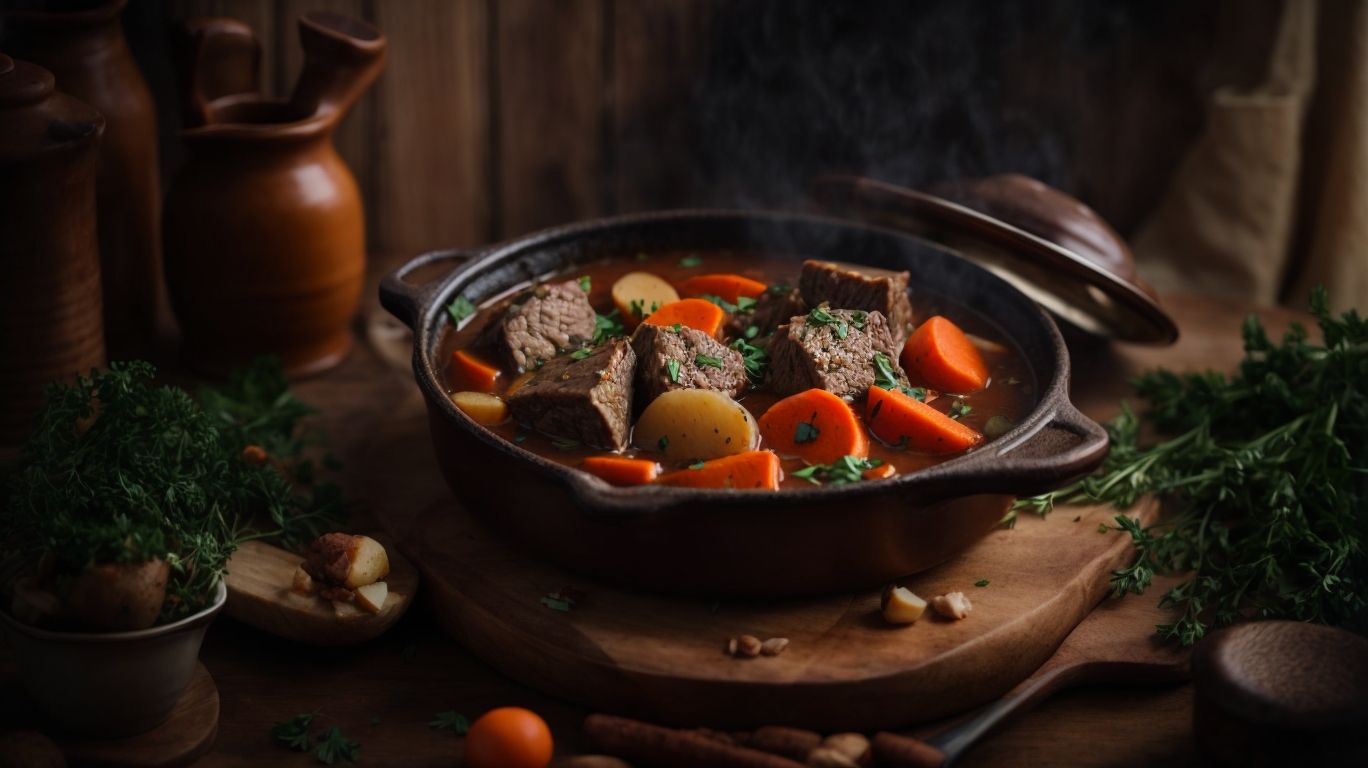
Credits: Poormet.Com – Zachary Gonzalez
Once the lamb stew is ready, knowing how to serve it to maximize enjoyment and how to store leftovers properly for future meals are essential considerations.
For serving a delicious lamb stew, presentation plays a crucial role. Serve the steaming stew in a beautiful ceramic or rustic bowl to enhance its appeal. Consider garnishing with a sprinkle of fresh herbs like parsley or a drizzle of extra virgin olive oil for added flavor and visual appeal.
Pairing the lamb stew with accompaniments such as crusty bread, mashed potatoes, or a side salad can elevate the dining experience. These sides provide contrasting textures and flavors that complement the hearty richness of the stew.
Regarding storing leftover lamb stew, transfer it into an airtight container and refrigerate it promptly to maintain its freshness. Reheat gently over low heat to preserve the flavors, and consider adding a splash of broth or water to prevent it from drying out.
Serving Suggestions
Enhance the dining experience by serving lamb stew with crusty bread, fresh herbs, or a side of creamy mashed potatoes for a complete and satisfying meal.
For a touch of freshness and acidity, consider adding a side of pickled red onions or a zesty mint yogurt sauce to complement the rich flavors of the lamb stew.
To enhance the visual appeal of the dish, garnish with a sprinkle of chopped parsley or a drizzle of high-quality olive oil for a sophisticated twist.
For a more substantial meal, pair the lamb stew with a side of garlic roasted vegetables or a warm couscous salad for added texture and complexity.
Storing Leftovers
Properly store leftover lamb stew in airtight containers in the refrigerator to maintain freshness and extend the dish’s enjoyment for future meals.
When refrigerating your lamb stew leftovers, ensure that the containers are tightly sealed to prevent any air exposure, which can lead to flavor loss and potential spoilage. It is recommended to consume refrigerated leftovers within 3-4 days for optimal taste and quality.
When reheating, gradually warm the stew on low heat to prevent overcooking and maintain its tender texture. To repurpose leftover stew, consider using it as a filling for savory pastries or mixing it with rice or vegetables to create a brand new dish.
Frequently Asked Questions
How to Cook Lamb for Stew?
What is the best cut of lamb to use for stew?
The best cut of lamb to use for stew is typically the shoulder or leg.
How to Cook Lamb for Stew?
Should I use bone-in or boneless lamb for stew?
Both bone-in and boneless lamb can be used for stew, but bone-in will add more flavor to the dish.
How to Cook Lamb for Stew?
How long does it take to cook lamb stew?
It usually takes about 2-3 hours to cook lamb stew, depending on the size of the meat and the heat level.
How to Cook Lamb for Stew?
Can I make lamb stew in a slow cooker?
Yes, lamb stew can be made in a slow cooker for a more convenient and hands-off cooking method.
How to Cook Lamb for Stew?
Do I need to marinate the lamb before cooking it for stew?
While marinating can add extra flavor, it is not necessary for lamb stew. However, you can marinate the lamb for a few hours beforehand if desired.
How to Cook Lamb for Stew?
What are some herbs and spices that go well with lamb stew?
Some common herbs and spices used in lamb stew include rosemary, thyme, bay leaves, and garlic. You can also add a pinch of cinnamon or cumin for extra depth of flavor.

